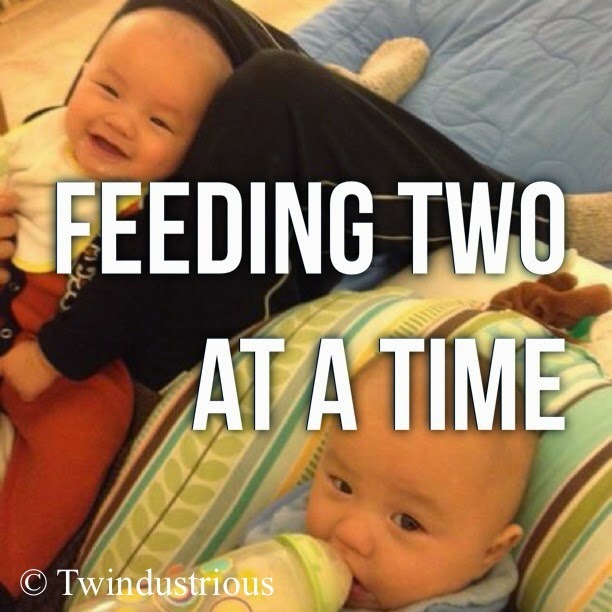 |
| Baby A, the day he was born. He was less than 5 pounds! |
 |
| Baby A was quick to rip off his breathing tube...ahhh, that's better! |
Thus, the twins spent almost their first two months at home. They got visitors, but we had people wash their hands before holding them. We did laundry and sanitized surfaces like crazy. Born on Halloween, a family gathering at Christmas may have been their first time to venture to a new place with a larger group of people. We did take them on stroller walks outside, but not places where a lot of people would touch them.
And they were healthy! Then we started leaving them at the church nursery, moved to a new state and I joined MOPS, where they had childcare. Eventually they went to childcare for a Bible study I went to, as well, and started going to more play dates. And then they were sick a lot!
 |
| Baby B, a few days after birth, soaking in the blue light for jaundice. |
It's inevitable that your babies and children will eventually get sick. They need to be sick sometimes, with minor things, to build up their immunities to certain strains of viruses. But one winter my twins and husband got the flu. The actual flu, that can be miserable and deadly, not just "stomach flu." The year after that we all seemed to be on an endless cycle of colds and infections, and we all got strep throat several times. (Though I will say, again, that we've had pretty good scenarios in terms of health in our family, and haven't had to endure the RSV lockdown period that many families of premies and micro-premies have.)
So, tired of being sick, and with threatening reports of rare viruses going around, I'm stepping up my game this season in my battle against illness!
Here's what we're doing:
- Multi-vitamin for myself daily. Our pediatrician seems to think my boys don't need one yet, since they eat so well and can get their nutrients from food at this point, but I may be doing further research on this.
- Elderberry syrup for the kids and I, daily doses. This is the brand we've been trying; they also have an adult version that I take. It's pricey, but the dose is only a teaspoon for children, so it lasts awhile.
- Flu shots for the three of us. Check! Still trying to get the husband to go in for his...
- Echinacea tea once a day, If I remember to make it for myself (not recommended for children).
- Vitamin C supplement. My doctor recently suggested I take one daily. She said it can't hurt and anything my body can't use I'll just pee out anyway. Currently, I'm just using Emergen-C packets, but I'm thinking of looking into more natural options.
- Breakfast smoothies for myself: at least 1 serving of fruit and/or 1 cup of leafy greens, with a source of protein (usually plain, unsweetened, whole milk yogurt, or oats) and sometimes chia seeds. I also add a liquid of some kind, such as coconut water, milk, orange juice, or chocolate almond milk, and if the rest of the ingredients weren't very sweet, then some honey. A friend of mine gave me the idea to pre-package smoothie concoctions in baggies in the freezer (just the produce and chia seeds, not yogurt, oats, liquids), so I'll do that now whenever I find a good price on frozen or fresh items.
- Fruits or vegetables, obviously, and for the boys my goal is 1 serving with every meal and snack. We're pretty good at meal times, but sometimes I slack off at snack times and they end up just eating crackers. Recent favorites have been apple slices and any vegetable dipped in hummus.
- Probiotics. I'm still learning about these, so right now I just make sure we eat yogurt or drink kefir at least once a day. I recently discovered kefir and we love it! This is my favorite brand so far.
- Sleep! Travels and summertime skewed our bedtime and naptime schedules. The boys recently started preschool, and naptime there is much earlier in the day. So we've slowly started to revert back to an earlier bedtime, earlier wake up time, and hopefully thus an earlier nap time. I also need to resolve to go to bed earlier and get more sleep myself.
- Hand washing! I've armed my purse, the car, and our bathrooms with hand sanitizer, you know the drill. However, I consider hand sanitizer my "in a pinch" solution, since I don't want to overuse it. As for traditional hand washing, I've been trying to observe the "20 seconds" rule of thumb.
Stay healthy out there!






















